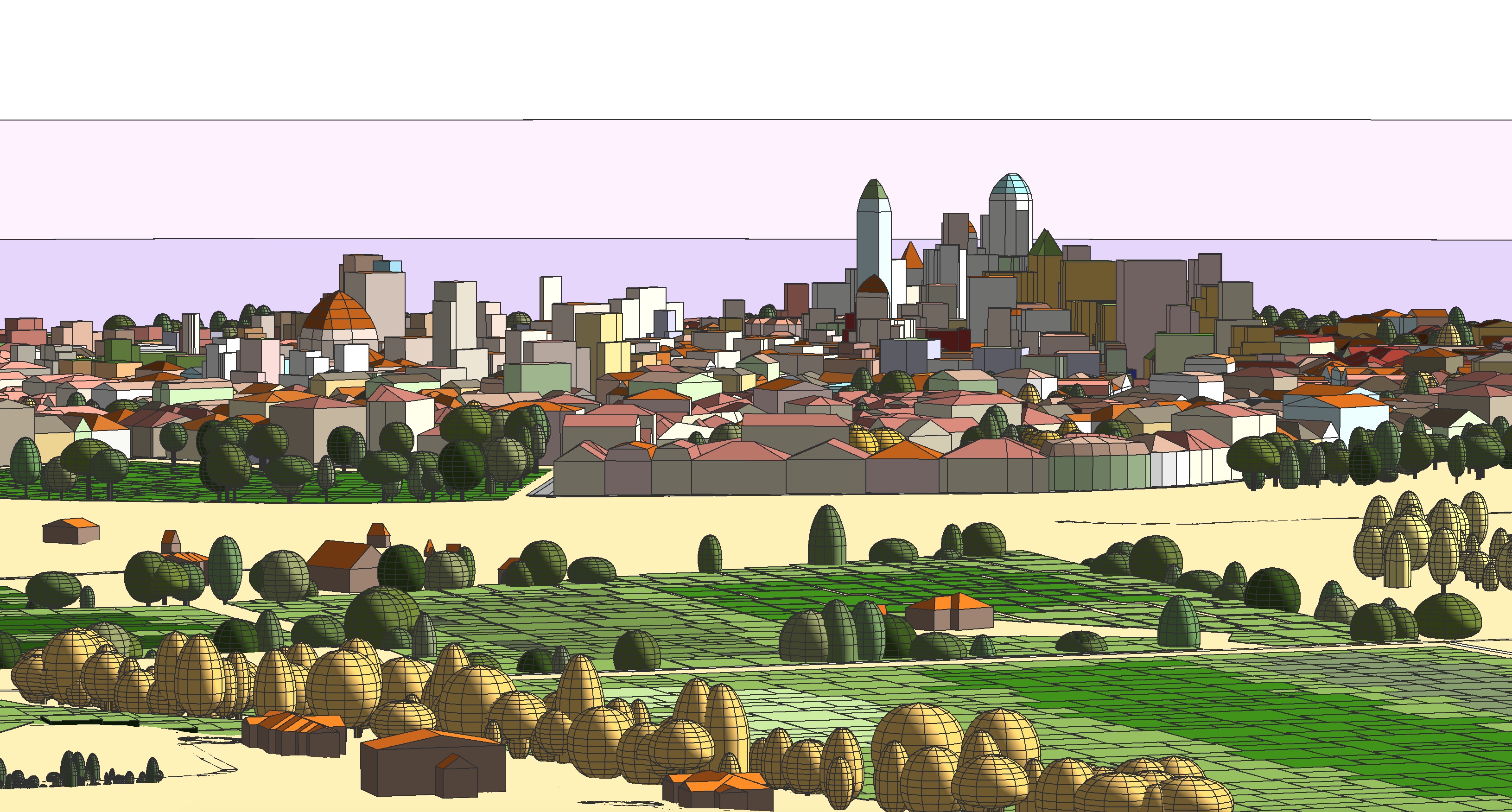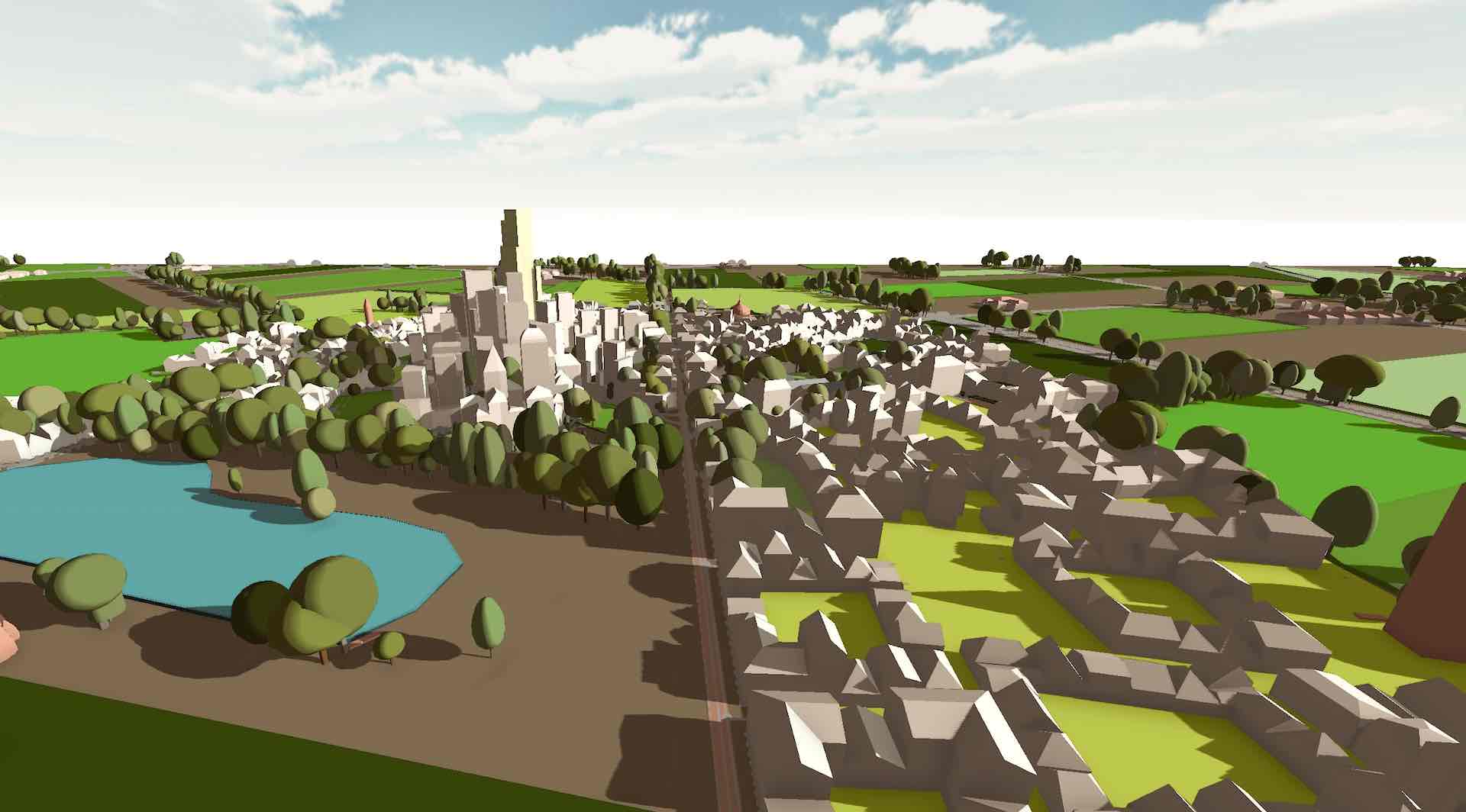A recent Forbes article about our hypothetical Cyclocroft Property Experiment has generated some great conversations, along with some excellent questions, which we’d like to answer here:
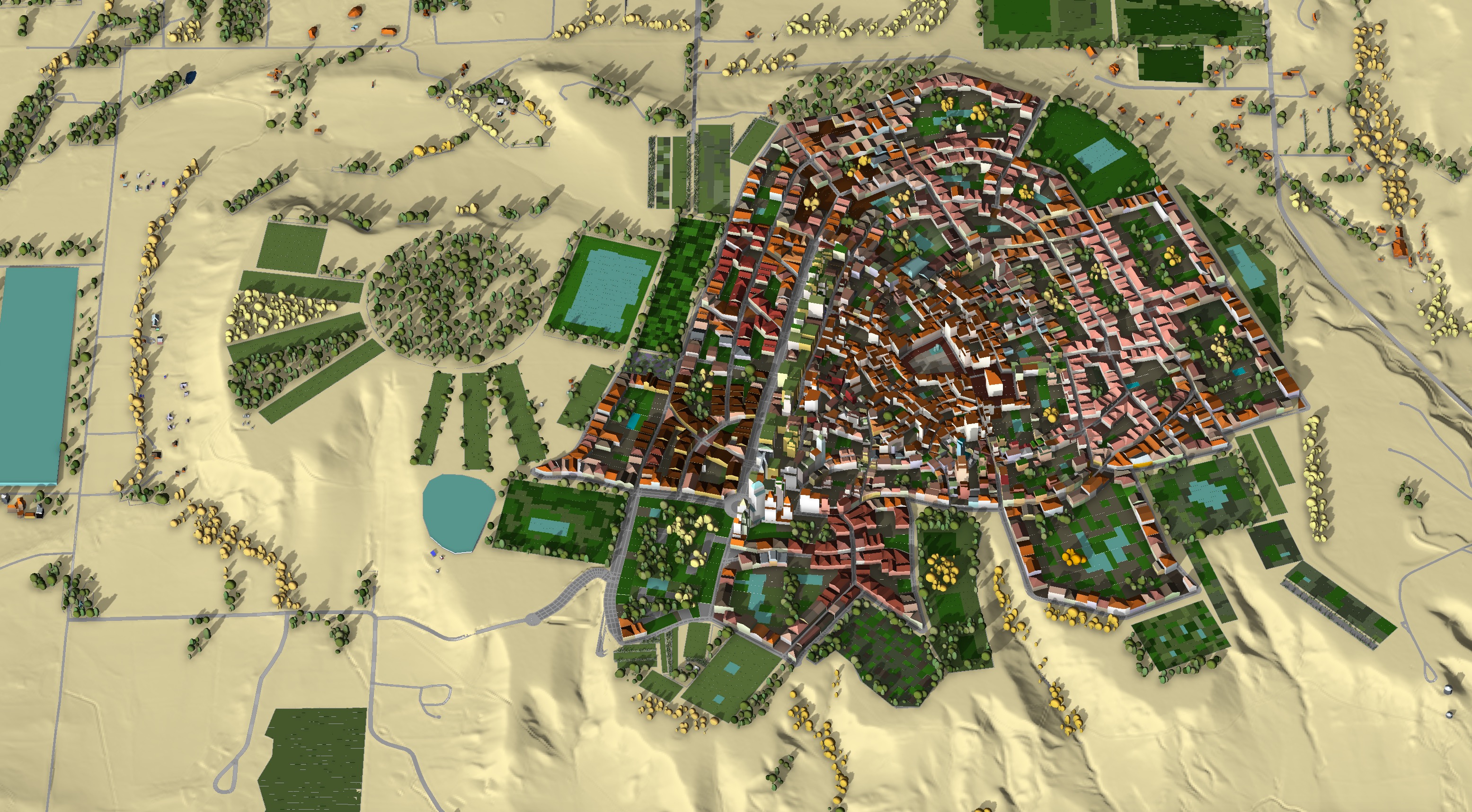
Do you really mean that cars would be banned?
‘Car-free’ refers to the day-to-day lifestyle in Cyclocroft and how the close proximity allows people to walk or cycle for everything they need. And when people want to head out of town to Denver, for example, carshare or high-frequency, affordable transit will be available. But cycling and walking will serve for most of local daily life, like in the Netherlands.
‘Car-lite’ is maybe a more accurate term. Cars will be limited to a few streets around the periphery of the town. But even then, they will be strictly limited to 10-15mph–as slow as a bike or slower. We’ll enforce this slow speed by curving the streets, not using a center line, using brick and cobble street surfaces, and using curbs, bump-outs, and other large street features that limit motor vehicle speed.
In the narrow streets in the center of town, pedestrians and cyclists will be the exclusive users and have access at all times. Motor vehicle access into town will be restricted by retractable bollards.
Those who still want to maintain their own private vehicles will be able to lease space in large underground garages that can be entered at the edge of the town.
For visitors who come to Cyclocroft by car, they’ll happily pay to park in the underground garages at the edge in exchange for the pleasure of being able to explore such a calming and lovely place where street sounds are made up of the laughter of children and the music of buskers, instead of car horns, engine noise, and tire hum.
What will the transport connections be like?
Since the overwhelming majority of Cyclocroft residents of will be living car-free, most of the external traffic it generates will be in the form of ebikes, e-scooters, and the like. Also, because the 50,000 people of Cyclecroft will be living in such a concentrated, compact form, it will be easy to establish successful high-frequency intercity transit.
The roads going in and out of town will be upgraded to account for the additional traffic flow that Cyclocroft will create. Along with basic upgrades to the road bed and vehicle lanes would be the addition of protected cycle paths.
How will the streets work?
On the outskirts of town are ‘ring-road’ streets that will accommodate slow vehicle traffic, with a maximum speed of 10-15 mph–as slow as a bike or slower.
Here’s an example of a small roundabout for bicycles that helps the automobiles get along with them and the pedestrians at the intersection.
In the narrow streets in the center, behind retractable bollards, the streets will be even more calm and quiet–perfect for playing children, pedestrians, mobility scooters, and slow cyclists.
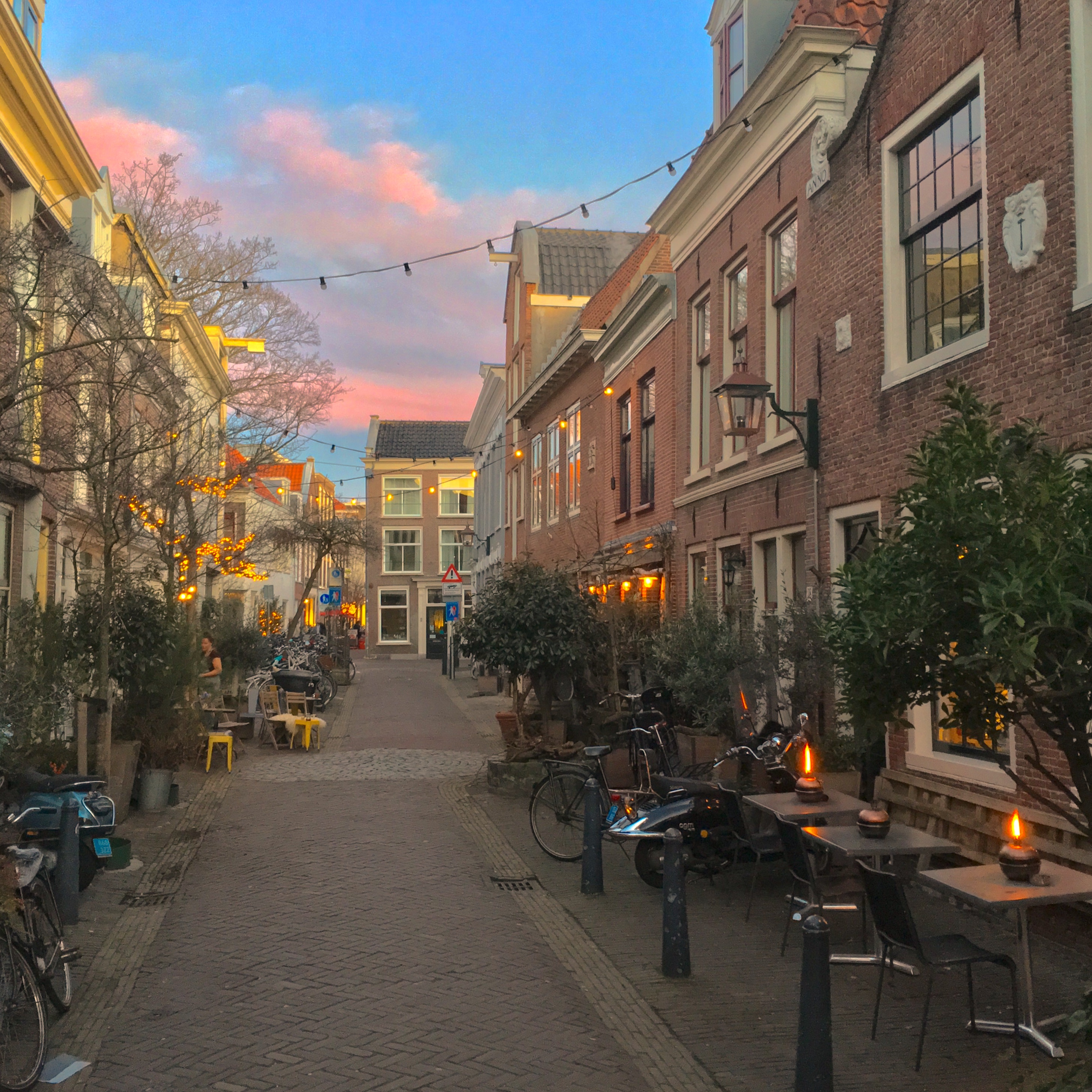
Emergency and delivery vehicles in small streets?
Some of the most common questions people have about living in such a compact place are:
- How will residents and businesses receive deliveries?
- How will construction or repair vehicles fit in the small streets?
- How do people move their things in and out of their residences?
- How will emergency vehicles like fire trucks and ambulances can get in?
But in Tokyo, Florence, and other compact places, they use smaller-scale versions of all types of industrial and emergency vehicles. While not common in North America, there is an existing product base geared entirely to these types of communities. Recently, DHL and other delivery companies have even started using electric cargo bike platforms for their last-mile deliveries in Amsterdam, for example.
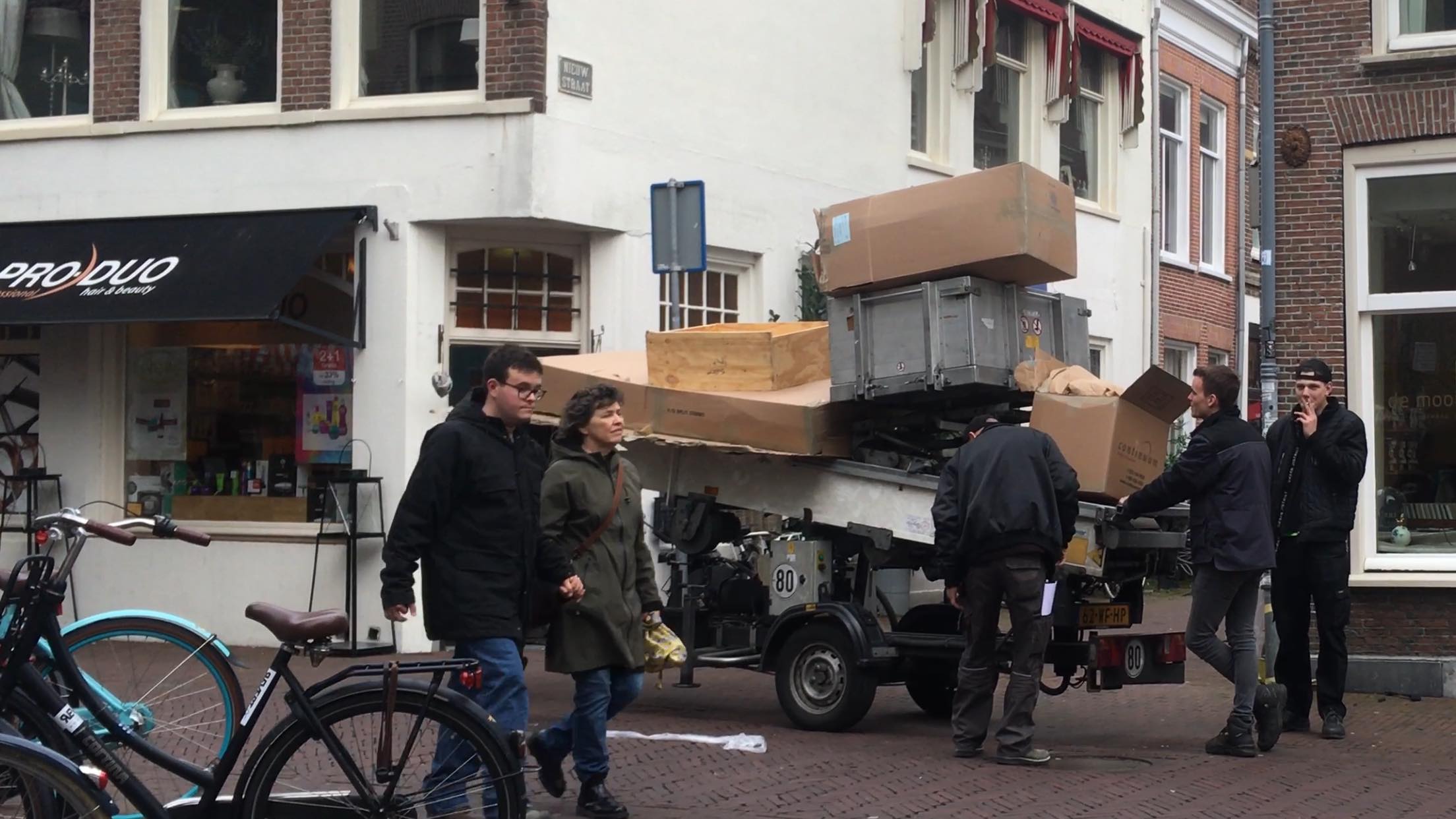
And in this short video, you’ll see a calm intermingling between pedestrians, cargo bikes, and bicycles, all while the crew of movers is preparing to lift furniture to an upper-story apartment:
For use within town, there will also be small electric cargo shuttles for the residents and businesses to use to move larger things from the loading docks and garages on the edge of town.
Also, since there will be food stores within walking distance, the need for large grocery runs will be unnecessary.
As one example of how super-compact places use small-scale technology to solve their problems, check out these two videos of an underground trash system for locals. In the first one, you’ll see how the residents use an RFID chip card to deposit their trash. In the second one, you’ll see a small industrial truck with a crane collecting for removal in the early morning. Easy peasy.
Also, Cyclocroft will have a far lower traffic accident potential than average. And it will be built almost entirely out of fire-proof materials, while also having the standard firefighting infrastructure like hydrants. We’re sure Cyclocroft will be a safer place than standard sprawl, and we’re confident the municipal bond rating will reflect that.
What are the facilities for the mobility impaired?
In the original Cyclocroft experiment page, we suggest ‘full ADA dignity with protected paths and wide sidewalks, ubiquitous ramps, chamfered curbs, slow-speed local streets, and diverse housing choices including upper floors accessible by elevators’.
Streets that are optimized for pedestrians and slow cyclists are inherently friendly for the young, the elderly, and the mobility impaired. On the few streets on the outskirts where cars are allowed, , the maximum speed will be a slow 10-15 mph. So that, combined with the majority of the town being motor-vehicle restricted, means that the there will be no place in town where the difference in speed between pedestrians and motorists will be great enough to be dangerous.
Here’s a video showing a wheelchair user safely and comfortably getting around on one of these motor-vehicle accessible streets on the outskirts of town:
Also, the overwhelming majority of the Dutch live independently all the way to the end of their lives. They walk, cycle, and increasingly e-bike, everywhere they need to go. Those who need mobility scooters or other aids are perfectly accommodated nearly everywhere.
Streets will be paved with specific patterns, colors and surface treatments that make it easy for the different users to know where they’re supposed to be.
How are energy and governance being handled?
The plan employs time-tested solutions for governance and utilities. We’ll be using global best practices in ultra-compact municipal design. However, this won’t be a gated community, or have HOAs or anything like that. It will be an old-fashioned town with conventional attributes, even though we’ll be using the most cutting edge of environmental energy technologies and durable building materials.
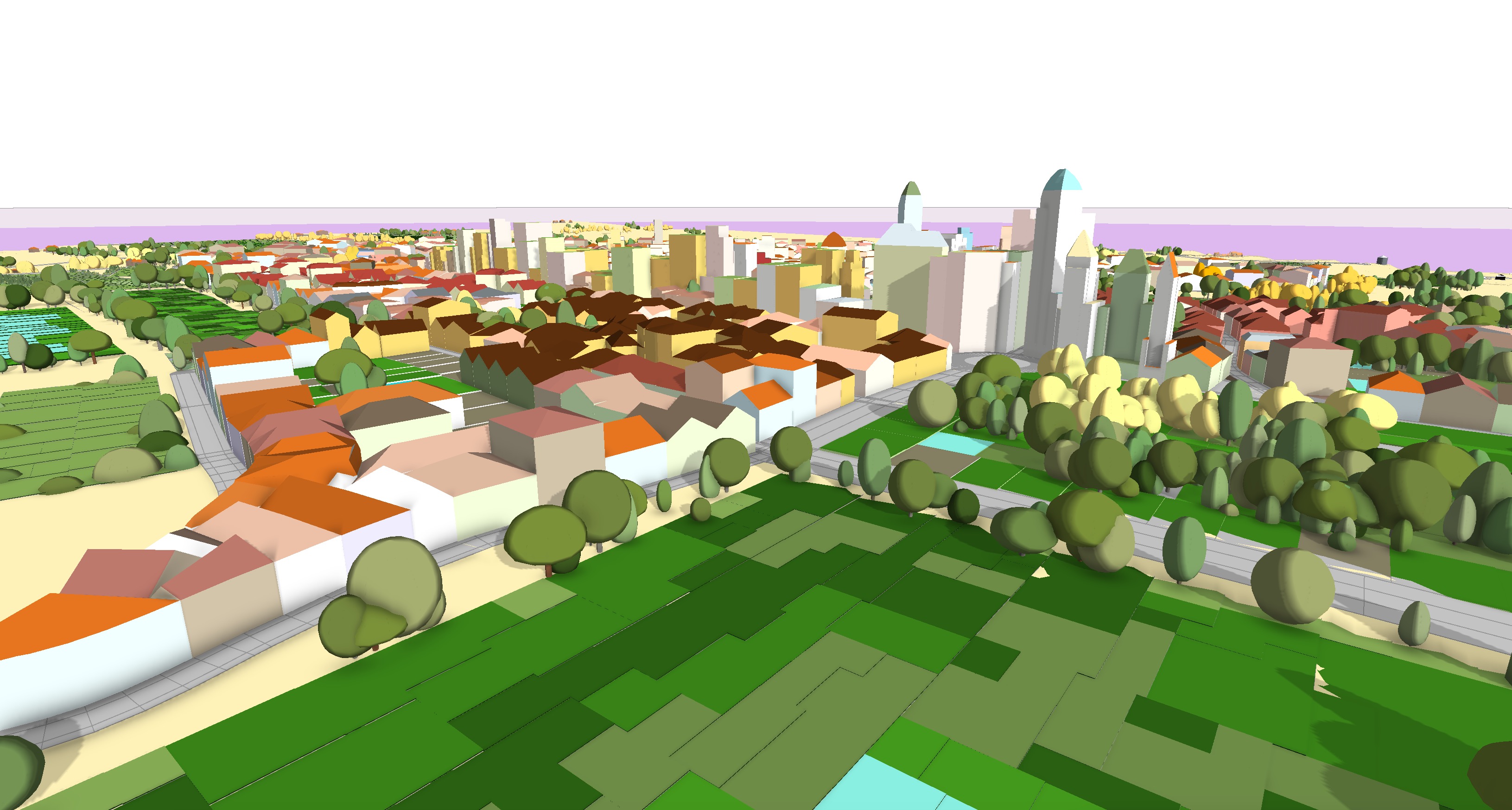
Aren’t underground garages impossibly expensive?
If you’re only digging for dedicated parking garages, they maybe they would be.
But, for example, if you have an underground loading dock to handle standard shipping trailers under the edge of town, adding residential parking garages to these sort of transport facilities would become affordable due to the piggy-backing of functions.
Everything costs something, but with strategy and programming, it’s possible to provide amenities at an affordable cost.
Why develop undisturbed land?
Growth in the form of sprawl is already happening, and is the greatest risk to undisturbed land. In our small way with Cyclocroft, we’re trying to reestablish historically scaled compact urbanism as a viable alternative to sprawl. By creating ultra-compact places of lasting value that are surrounded by protected agricultural, ranch, and wild lands, we can have countryside conservation and community at the same time.
We’re hoping that after the failed experience of the 20th century, people might be ready to try something old again. And ultimately, this would be just one square mile, which is really small in the grand scheme of things for the type of positive impact that it could have on the surrounding environment.
We fundamentally believe that the historical evidence shows that the countryside and wildlife flourish most by having well-functioning, ultra-compact economies that help locals manage their surrounding ecosystems.
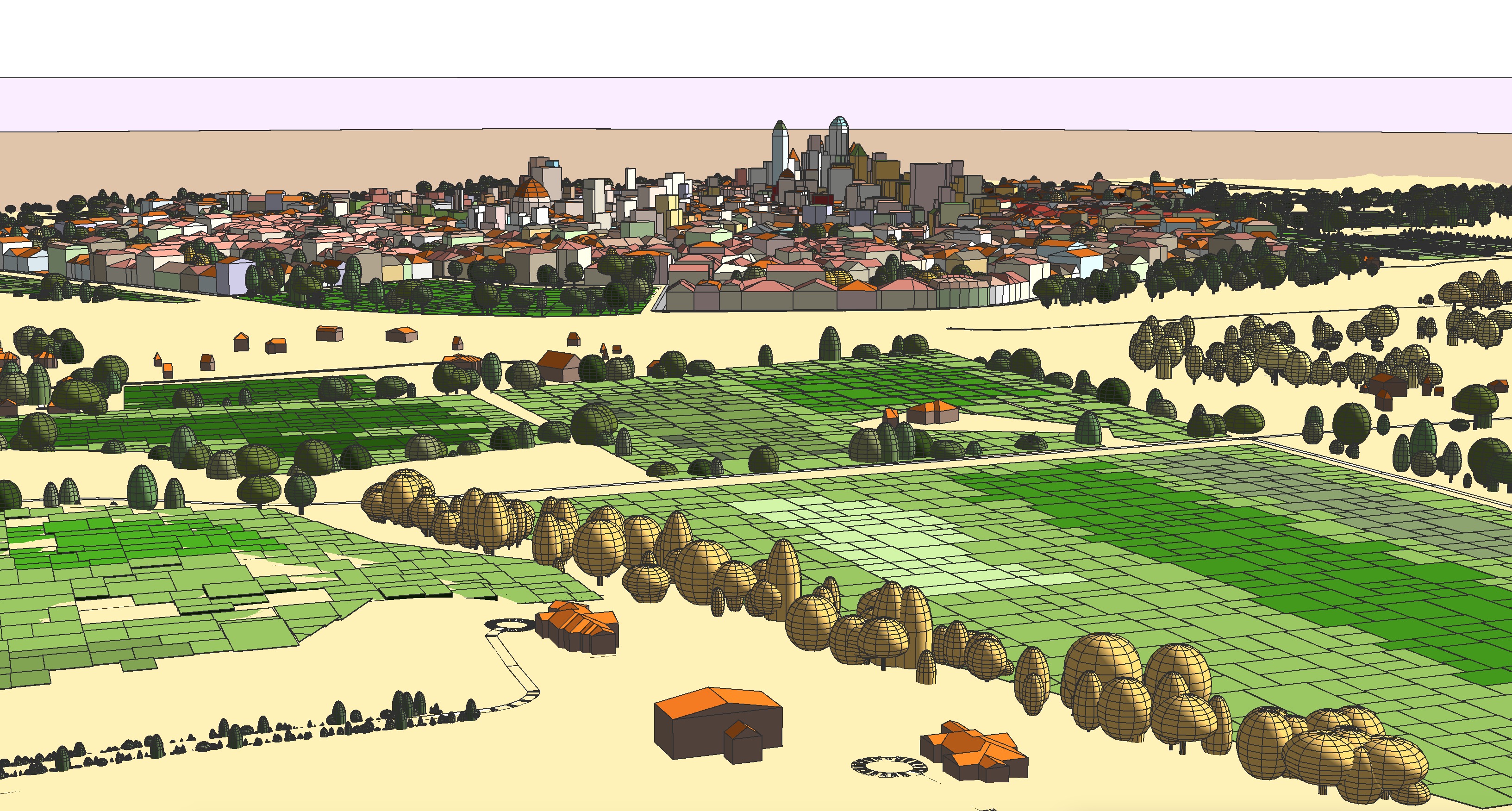
Why not just make it better in an existing place?
We would be happy to work with an existing place that wanted to develop in this ultra-compact, vertical mixed-use manner. But it’s still the case that this big of a change in density would require a complete disruption of the policies and platting of most existing towns and cities. And it appears that’s not what most people want, which is why we’re focusing on making a new, ultra-compact place.
And if we can be successful in proving the value of this level of compactness, we believe we could have a greater impact on encouraging existing cities by serving as a cohesive model for best practices.
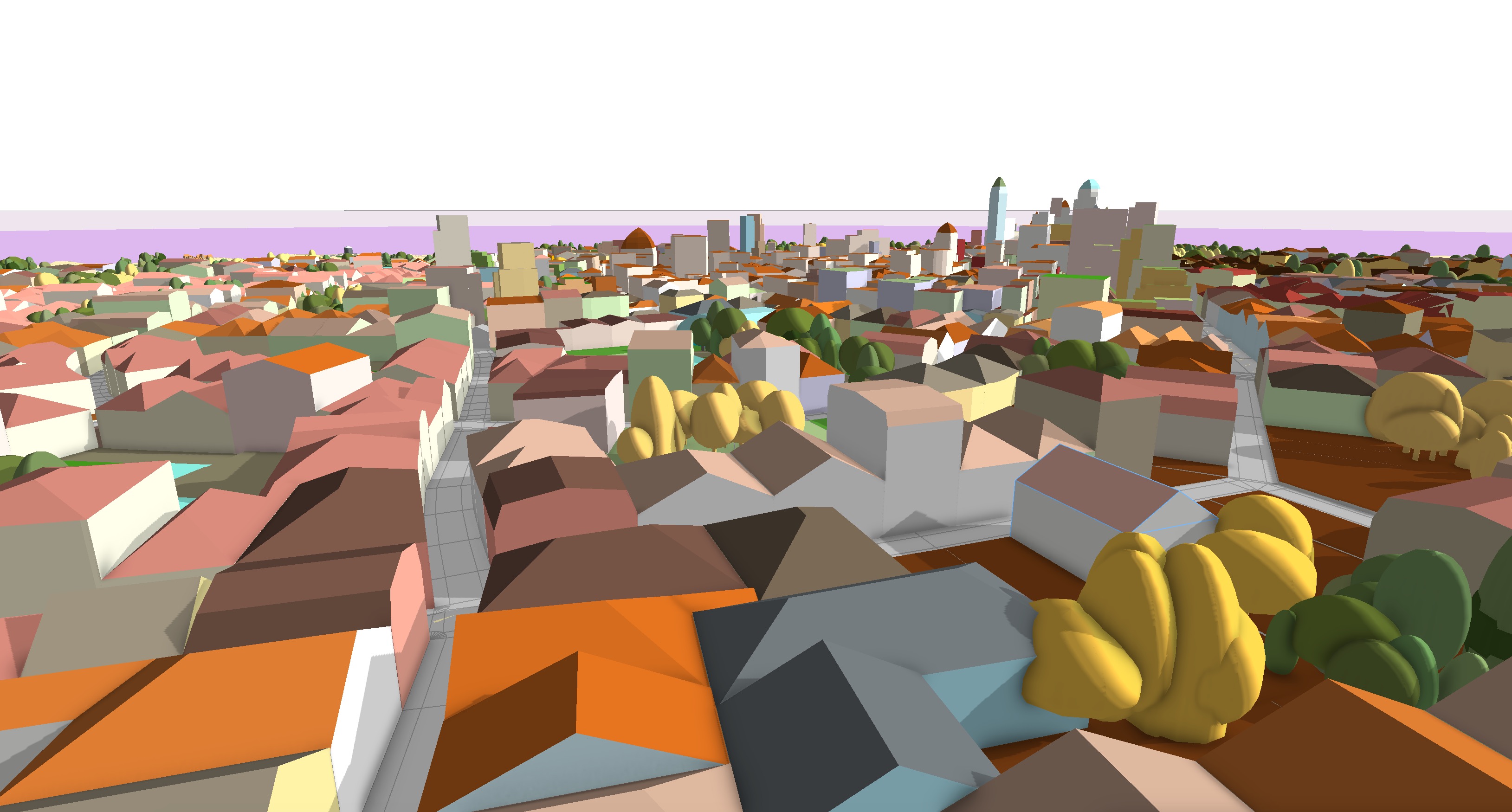
Why not use a rigid grid street pattern?
The rigid grid street pattern is a network of perfectly straight streets that intersect at right angles. It was invented around 2,000 years ago and made popular by the Romans, and people have been capable of laying out their cities this way ever since. This style of street layout was popular in Chicago, NYC and other places developed during the 18th and 19th centuries. This was an era when rationalism was the design imperative, and people were convinced that the loose streets of the old world were primitive and had no value.
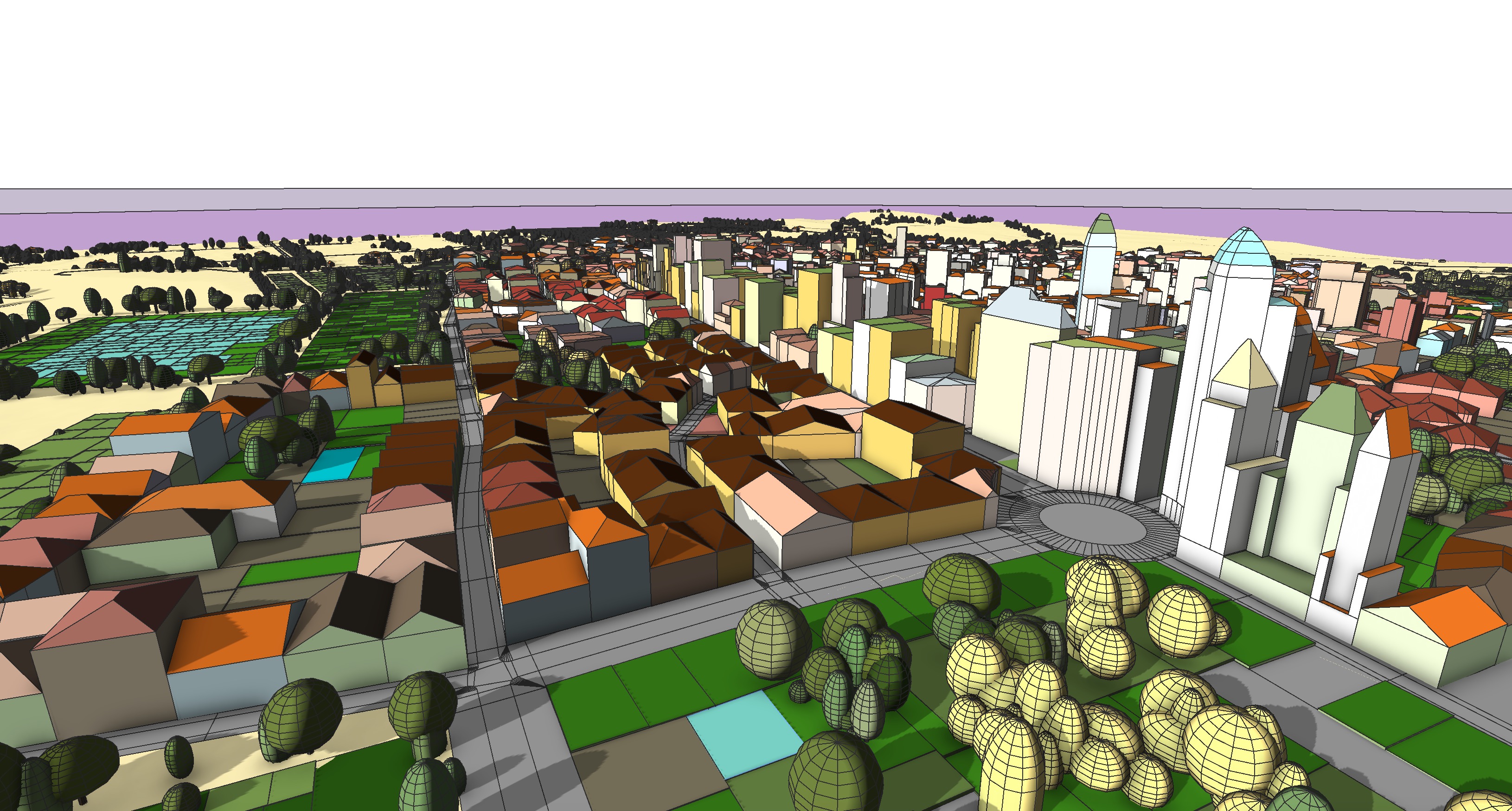
However, the vast majority of well-loved places in the old world haven’t followed this pattern, and instead used a loose street network where streets are not straight or uniform, and intersections aren’t set at 90 degrees.
In a place as small as Cyclocroft, having these quaint lanes and backstreets with meanders and curves helps give character and uniqueness to every corner. Navigation is made easier by these memorable features, and it’s effortless to develop a mental map of the whole community. And since everyone carries a smart phone these days, and it’s less than one mile in any direction, its hard to get truly lost.
Why is there a melange of different colors and styles?
B4place doesn’t promote modern, master-planned and uniform-style developments. Now that people can see the rest of the world via Instagram, YouTube, and Google Street View, they know the difference between an authentic and an over-planned, contrived one. We employ a procedural approach to our placemaking designs that includes ‘strategic heterogeneity’. This has proven crucial to creating places that appear and perform as if they had grown over time.
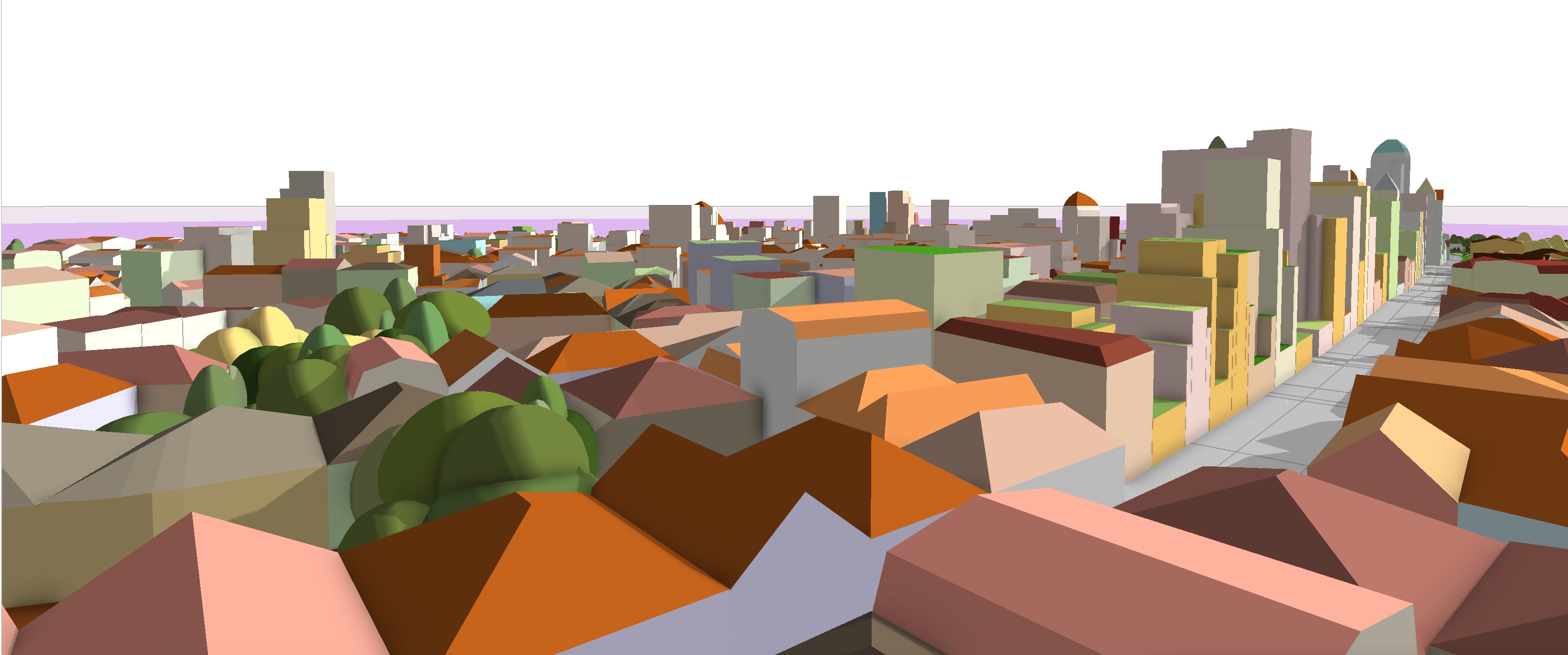
Has NOAA agreed to Cyclocroft being built?
We haven’t tried to contact NOAA. We chose the site because it was large and flat enough and didn’t have an existing community or farming on it already. It serves as a proxy of a good location where something like Cyclocroft could be built.
But ultimately, this specific location design was primarily intended to start a conversation about how we can live up to our stated beliefs in quality of life and environmental stewardship through compact development and durable frugality. And to encourage people to think that a place like Cyclocroft is within their reach, regardless of the actual location.
But who knows, maybe Table Mountain is soon to be a surplus facility, and NOAA would welcome such a development.
